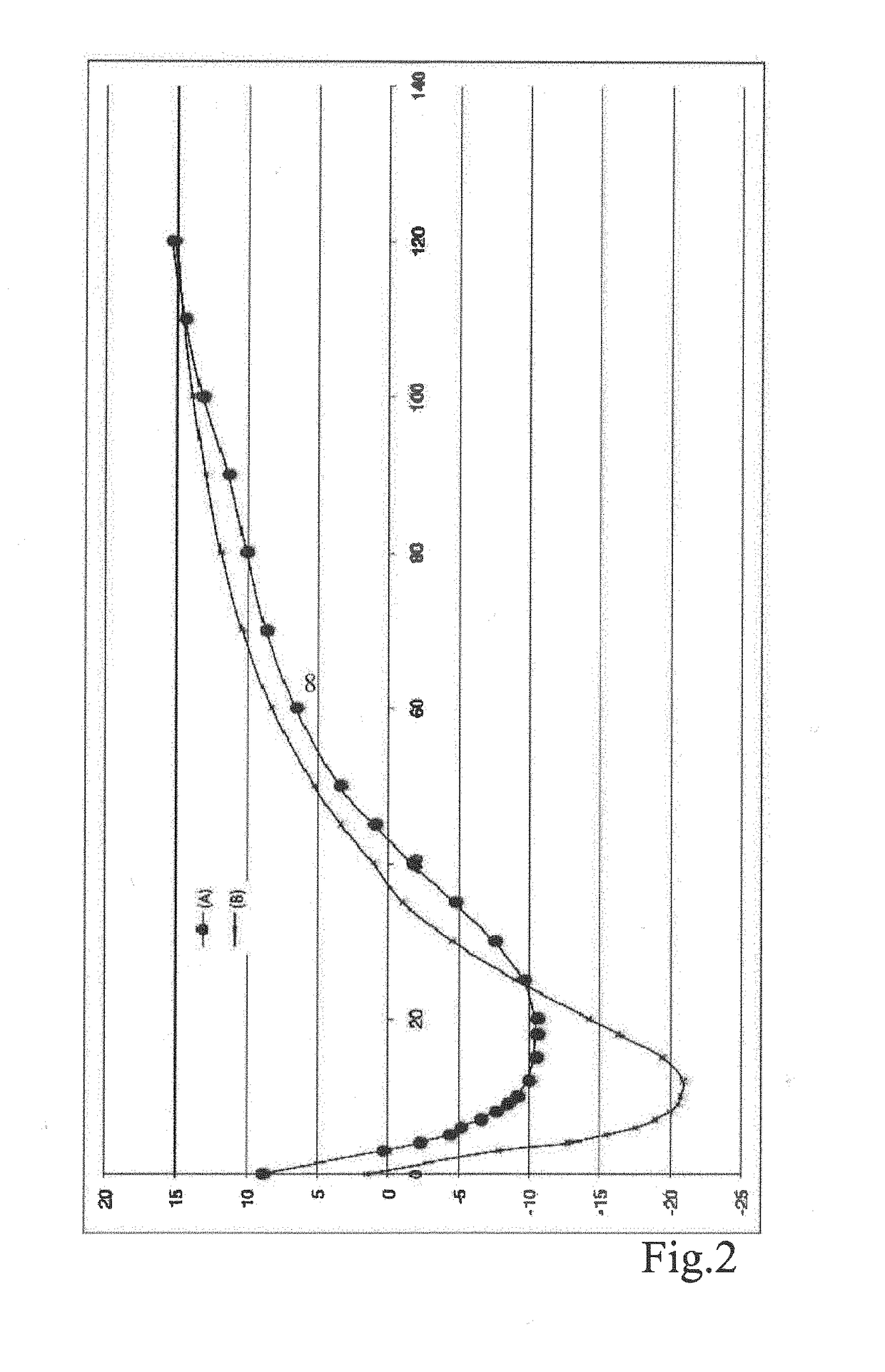Method and device for cosmetically treating dark spots on the skin by means of cryo-cyto-selective cryogenics
a cryogenic and skin technology, applied in the field of cosmetic treatment of dark spots on the skin, can solve the problems of low compliance, high risk of recurrence, powerful and unwieldy,
- Summary
- Abstract
- Description
- Claims
- Application Information
AI Technical Summary
Benefits of technology
Problems solved by technology
Method used
Image
Examples
Embodiment Construction
[0048]Cryotherapy is a method that is considered to be painful in 64% of the patients treated when the cold is applied for over 10 seconds. If the cold is applied for under 10 seconds, 44% of the patients do not perceive any pain. The lower the time of application, the lower the pain. However, a low exposure to cold considerably reduces the efficacy of the treatment since, in such a case, only 30% of the patients are cured. It is clear that the time of cold application has a direct impact on the efficacy of the treatment and the intensity of the pain experienced.
[0049]The cooling of tissue leads to changes in the physical state and, according to the conditions for the application of the cold, its preservation or, on the contrary, its alteration. The thermal shock applied in the context of the invention is a highly considerable reduction in the temperature in a minimum of time. The procedure is implemented by very rapid freezing, followed by slow warming in which the action of the co...
PUM
 Login to View More
Login to View More Abstract
Description
Claims
Application Information
 Login to View More
Login to View More - R&D
- Intellectual Property
- Life Sciences
- Materials
- Tech Scout
- Unparalleled Data Quality
- Higher Quality Content
- 60% Fewer Hallucinations
Browse by: Latest US Patents, China's latest patents, Technical Efficacy Thesaurus, Application Domain, Technology Topic, Popular Technical Reports.
© 2025 PatSnap. All rights reserved.Legal|Privacy policy|Modern Slavery Act Transparency Statement|Sitemap|About US| Contact US: help@patsnap.com



